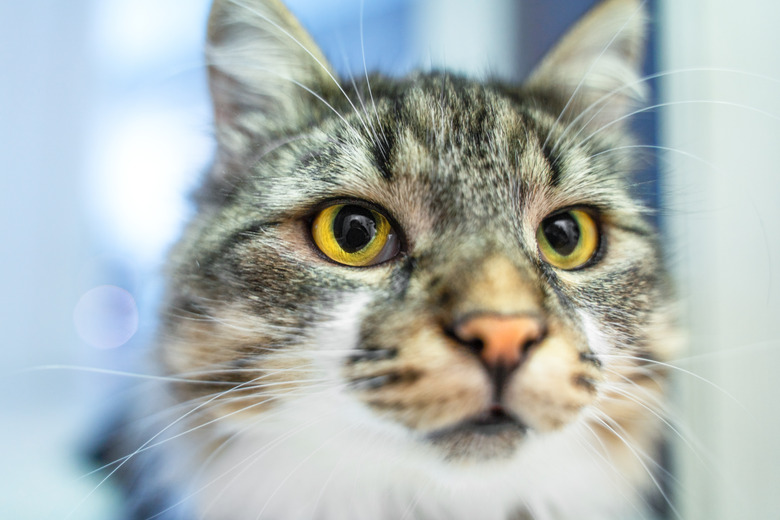New Study Explains How A Cat's Nose Really Works
Have you seen any of these TikTok videos of cats becoming absolutely repulsed by the smells of certain foods? Sometimes it's raw prawns, sometimes it's yogurt — whatever it is, it leaves them grossed out and gagging before running off to forget the memory of that foul odor! It's a strange sight to see and may leave you wondering how rotten that morsel was to make a cat's eyes bulge like that. As it turns out, it may not be the quality of the food at all, but the power of a cat's nose that's making some of them so sensitive to smells.
The nasal structure of domestic cats
The nasal structure of domestic cats
A human nose is pretty good at sniffing out an odor, and a dog's nose is well-known for being hundreds of times better than our own at identifying the scents around them. Cats aren't given much credit for their abilities to smell, but their noses are strong, and according to a recent study, may even work like a gas chromatograph to send scent signals to the brain. According to a study published in PLOS Computational Biology, a cat's nasal passages are comprised of coiled turbinates, which regulate airflow in the nasal passages. The chromatograph analogy comes from a cat's way of separating scents to know which should be sent upstairs for analysis, and which can be recycled for breathing.
This efficient, space-saving design makes total sense, as a cat's head simply doesn't have the space to host just one long tunnel to handle all that scent detection, especially considering how important the sense is for their survival as both predators and prey. You can think of it as a spiral staircase versus a vertical staircase — the spiral design fits more steps in a smaller space, just like a cat's nose fits more scent receptors in a tighter passageway.
Understanding the vomeronasal organ
Understanding the vomeronasal organ
So how did the research team figure this out about our feline friends and their mysterious cat behavior? They created a computerized 3-D model of a feline nose and then watched it as it went to work. What they saw was airflow becoming essentially filtered by the strength of the scent molecules within it before being sent off through the maze of turbinates to determine if what they were picking up was important, like food, another cat, urine, or other aromas. Some of this air containing unnecessary scent information was humidified and cleaned for safe use within the turbinates, and the scent-heavy air was sent to the olfactory system for further analysis.
Cats have what's known as a vomeronasal organ in the backs of their mouths. This organ, also known as the Jacobson's organ, helps them identify scents, hormonal signals, and pheromones from other cats. This is why you may sometimes see your cat with their mouth agape — while they may look dumbfounded to you, what they're actually doing is honing in on a nearby scent, which travels over the roof of the mouth to the back of the nasal cavity. This can also affect a feline's taste buds, so when your cat gets a mouthful of a whiff, they may gag, sneeze, or tilt their head back, officially known as a flehmen response.
Thanks to the sophisticated function of the turbines in a cat's nasal passageways, it's believed that the separated scents are quickly delivered to the Jacobson's organ, which then sends it to the brain to be translated into a signal that a cat can decipher. The nasal cavity function helps cats translate scents quickly, which can be especially helpful when examining cat food and other tasty bites, especially for an outdoor cat.
The battle of the best noses
The battle of the best noses
The sense of smell for cats is much better than humans. They have far higher olfaction than a rodent, but not quite as great as a dogs. The comparison of their noses to a chromatograph has been made with one other type of animal, however—amphibians! Even then, the cat's nose is deemed 100 times stronger, making it one of the most complex noses studied by science.
The bottom line
The bottom line
Cats have about 200 million scent receptors in their noses, which they use to identify food, territorial boundaries, clean water sources, and other important details that may mean life or death. Their nasal passages are now shown to be made up of coiled channels that can actually separate scents. This creates two separate channels — one for respiratory function, and one for olfactory function, and allows a cat to decipher scent quickly without compromising the airflow that they need to keep breathing.


